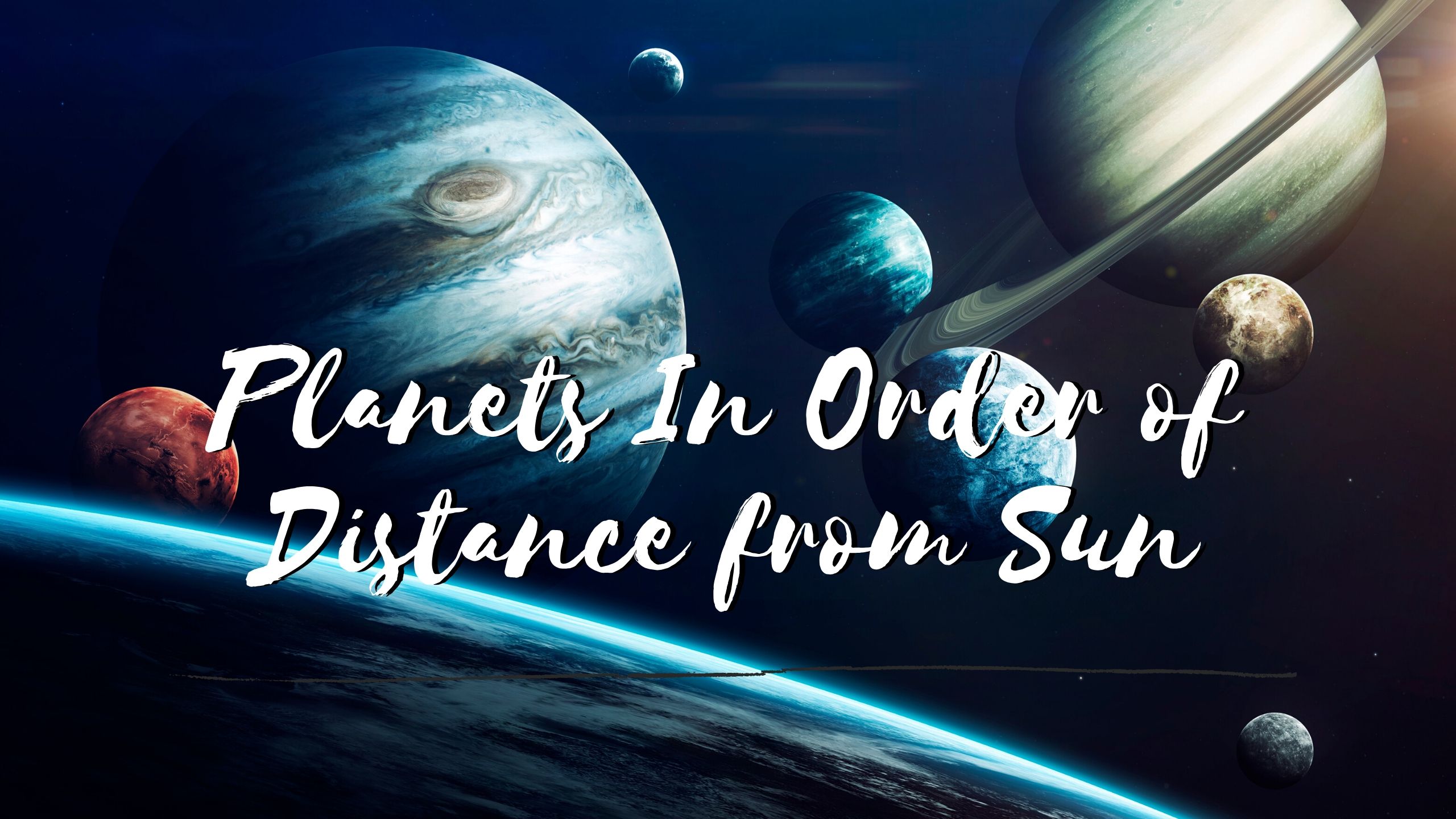Our universe is made up of a large number of celestial bodies. And millions of galaxies are scattered across the universe. These galaxies are a group of a large number of planets, stars, dust and other celestial objects bound together by gravity. These make up the basic structural unit of the universe. In this article, we will focus on one such solar system in one such galaxy, and list down all the planets in order that we have in this solar system.

We reside in the Milky Way galaxy. It is called the milky way as it appears as a milky band of light in the very dark sky. Every single star or celestial phenomenon which you see in the sky is happening in our galaxy. It contains around 400 and 500 billion stars and 100 billion planets. Of those 100 billion planets, only 8 make up the bulk of our Solar system.
Solar System: Where we belong
The Solar System consists of the Sun in the centre with the planets revolving around it. These planets, in turn, have stars which revolve around them. Earlier, there were 12 planets making up the solar system (including the dwarf planets).
Curious to know what are the 12 planets, when all you have ever heard about is 9?
These 12 planets in order are Mercury, Venus, Earth, Mars, Jupiter, Saturn, Uranus, Neptune, Pluto, Ceres, Makemake and Eris.
Generally, we used to consider only 9 planets, but Pluto was recently ruled out as being a dwarf planet, thus bringing the total tally to 8.
These 8 major planets in order of distance from the Sun (closest to farthest) are Mercury, Venus, Earth, Mars, Jupiter, Saturn, Uranus, Neptune. These planets can further be grouped into two categories: Terrestrial (Inner) Planets and Gas Giants (Outer Planets).

Mercury, Venus, Earth and Mars, which are the closest to the Sun belong to the Terrestrial Planets category. These are generally characterized by dense, rocky composition. Jupiter, Saturn, Uranus and Neptune which are found in the outer solar system constitute the Gas Giants. These are generally massive and are wholly made up of gas.
The Planets in Order
Now, let us take a more detailed look at these 8 planets in order of their distance from the sun (Pluto we miss you!) which make up our solar system.
1. Mercury
This is the planet which bears the brunt of the Sun’s heat. It is located just 58 million km or 0.39 AU (Astronomical Units) away from the Sun. That’s pretty close, considering the overall size of the universe. Even though Mercury comes first in line, it is actually not the hottest planet of the Solar System.
Why?
Well, this is because it has no atmosphere at all. The absence of atmosphere means that it cannot trap heat and thus it doesn’t get that hot. Mercury also holds the title of being the smallest planet in our solar system. In fact, it is even smaller than the largest moon of the solar system, Ganymede ( pretty Geeky, right? ) which orbits Jupiter. Strangely, Mercury doesn’t have any moon of its own.
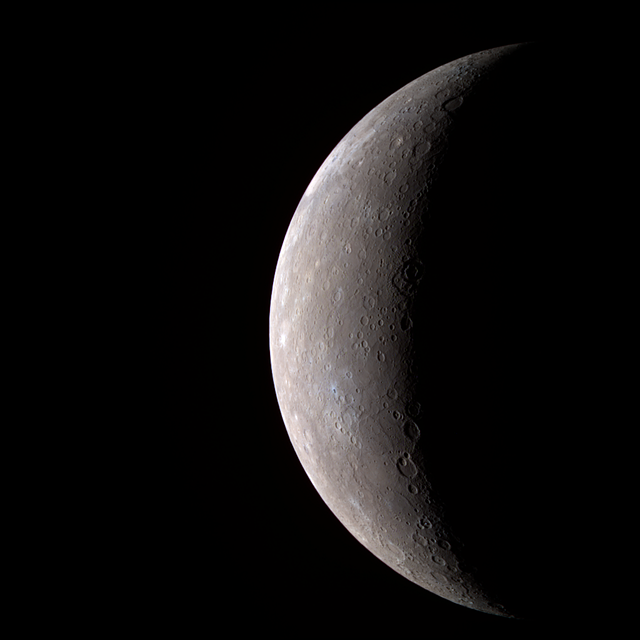
2. Venus
Venus is the second in line and the hottest of all. It is located around 108 million km or 0.72 AU away from the Sun. It owes its hot nature to a thick atmosphere and proximity to the Sun. Temperatures here can reach up to a scorching 735K.
Venus is often called a “Sister Planet” to the Earth because of it being really close in size to the Earth. Just like Mercury, Venus also has no moons. It spins in the opposite direction as compared to other planets, meaning that the Sun rises in the West and sets in the East here. Since it is brighter than any other object in the morning and evening sky, it is also called “Morning Star” or “Evening Star”.
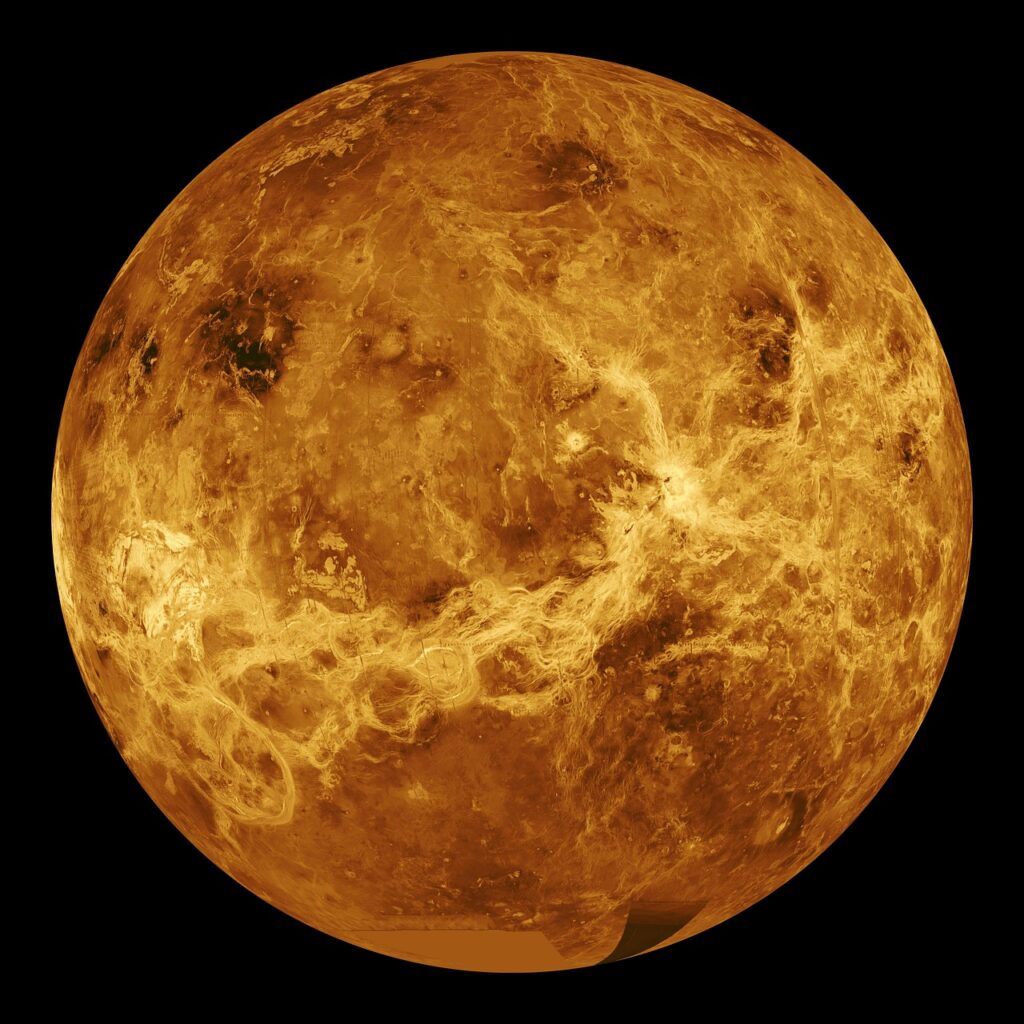
3. Earth
Here comes our “Mother Earth”. Our home since time immemorial, and the only known planet to support life, Earth lies 3rd from the Sun. Located at a distance of 130 million km or 1 AU from the Sun, it contains all the necessary conditions vital for supporting life.
Earth as said before is a terrestrial planet whose surface keeps on changing. Around 70% of the total area of the planet is covered with water. Earth has one moon which is in constant revolution around it. Its atmosphere is made up of 78% Nitrogen, 21% Oxygen and 1% other gases. This atmosphere is also responsible for protecting the surface of the Earth from harmful radiations and various other things.
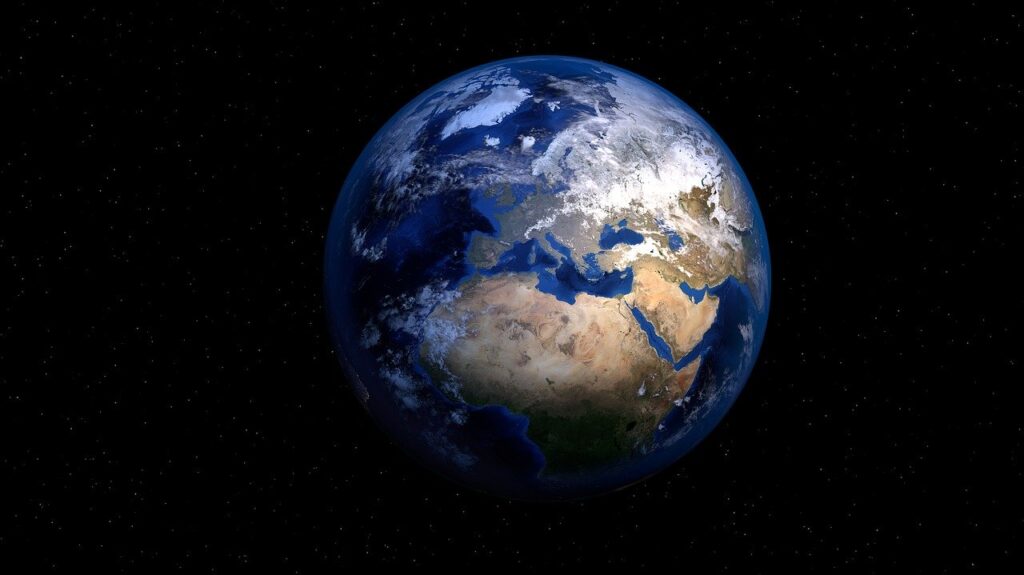
4. Mars
Located at a distance of 228 million km or 1.52 AU, it is the 4th planet in the Solar System. It is also called the “Red Planet” as the iron oxide present on its surface imparts it a reddish hue. It is the most similar planet to our Earth in the whole solar system, due to similar rotation, tilt and seasonal cycles. This is the prime reason why most of the research involving finding other planets suitable for life is concentrated on Mars.
It has a thin atmosphere and consists of two moons revolving around it, Phobos and Deimos.
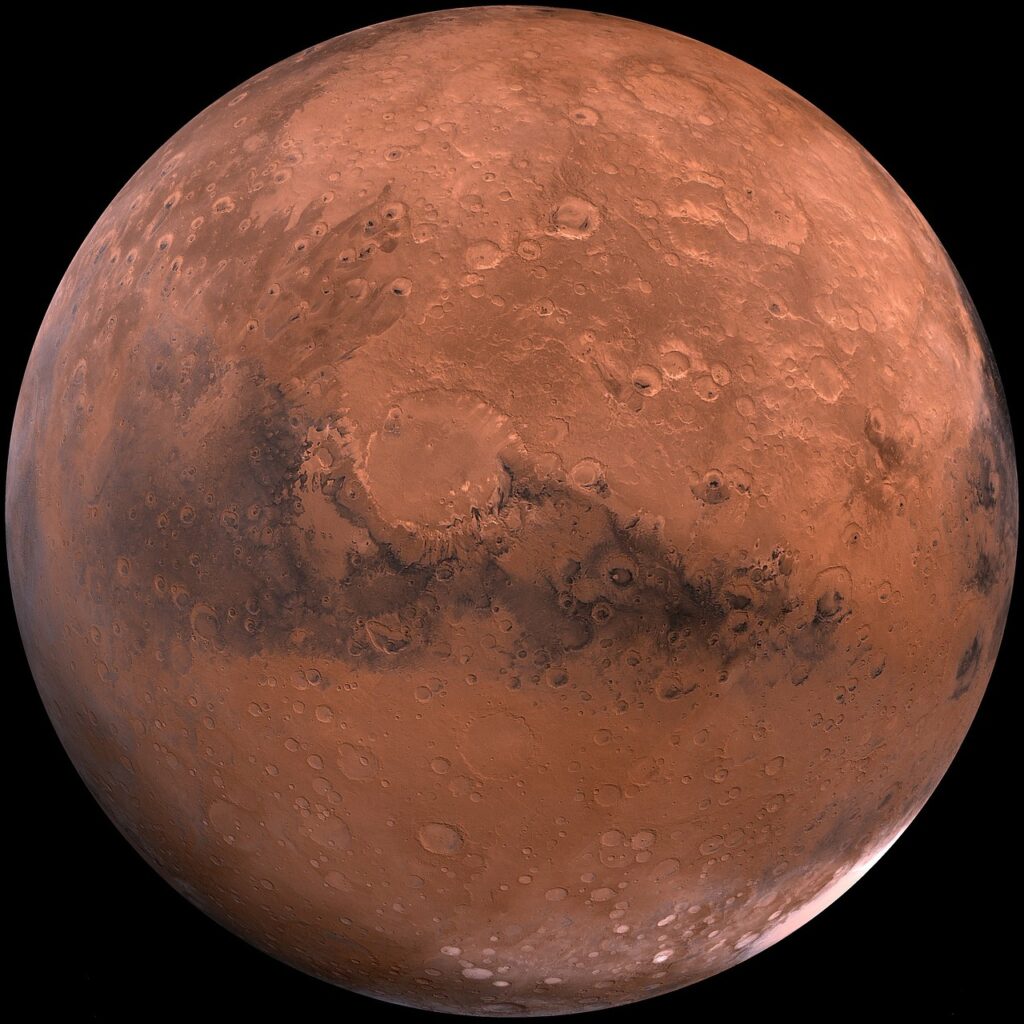
5. Jupiter
The 5th planet from the Sun and the most massive one, Jupiter is 317 times the mass of Earth. Located at a distance of 778 million km or 5.2 AU, it is two and half times larger than all other planets of the solar system combined. It is basically a giant ball of gas, Hydrogen and Helium being the primary components along with other trace components.
It contains an astounding 67 moons, which makes it a mini world solar system in itself. Ganymede, the largest moon of the Solar System also revolves around this planet.

6. Saturn
Saturn is located at a distance of 1.4 billion km or 9.5 AU from the Sun. It is also a Gas Giant with a solid core, and perhaps the easiest one to identify. It consists of a meticulous system of 7 rings surrounding it with gaps in between. Saturn’s atmospheres is mainly made up of Hydrogen and Helium and it consists of 53 known moons.
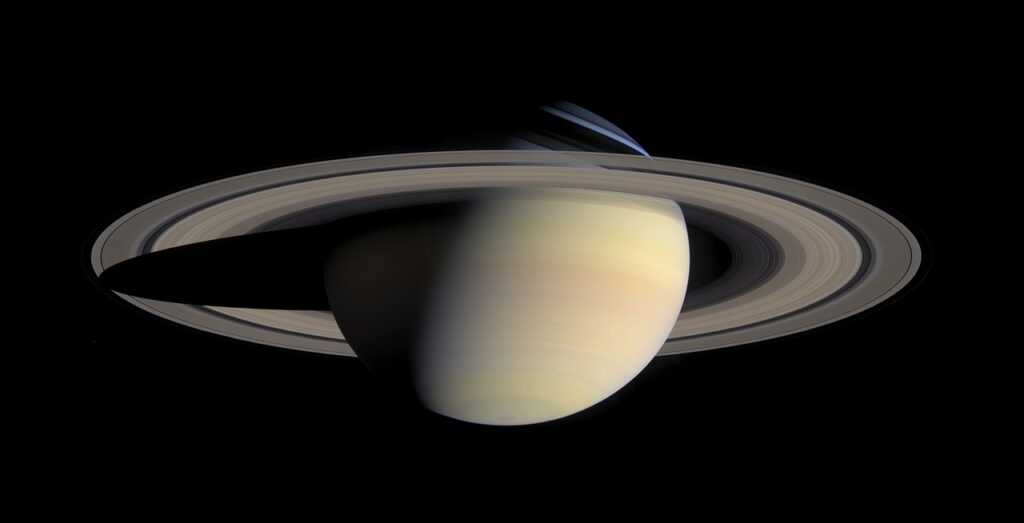
7. Uranus
This is the 7th planet in our solar system and is located at a distance of 2.9 billion km or 19.19 AU from the Sun. It is most popularly referred to as the “Ice Giant” due to the presence of Ammonia, Methane, Water and various other hydrocarbons in ice form. This is also one of the reasons for it being the coldest planet of the Solar System.
Uranus has a nice bluish appearance and has 27 moons, which orbit Neptune’s equator. It also has faint inner narrow rings and dark, brightly coloured outer ones.

8. Neptune
Located at a distance of 4.5 billion km or 30.07 AU, Neptune is the farthest planet from the Sun. It is classified as an “Ice Giant” along with Uranus and is made up of gas. It is quite similar to Uranus as it contains methane ice and a system of faint inner and outer rings. Neptune was the first planet to predicted to exist by using Maths and consists of 13 moons and 6 rings.

Well if you didn’t before, now you know what are the various planets in order of their distance from the Sun. After all, our universe is an extremely intriguing thing and learning about it can be really fun. So keep your search running and mind exploring the farthest reaches of space.
